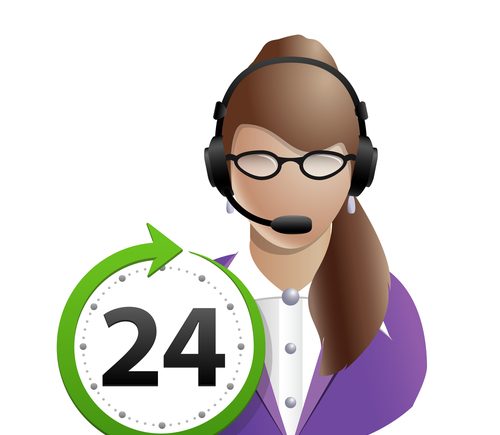At some point in our lives, we have all received a RoboCall. They are those pesky pre-recorded calls that try to sell just about every product imaginable: from time shares to cheap mortgage refinances to “free” money. While there are some pre-recorded calls that are legit (such as appointment reminders or services you have subscribed to), most of them are illegal. But with criminals being savvy and using throwaway numbers that are hard to track down, these calls have actually been increasing in recent years. Last year the Federal Trade Commission (FTC) issued a challenge to the general public. The goal was to find someone who could design a system to stop those calls.
The Challenge
The FTC fields nearly 200,000 calls per month complaining about RoboCalls. They are simply swamped with complaints and cannot keep up with the demand to track down and prosecute (if possible) the perpetrators. Instead of devoting precious man-hours to the project they issued a RoboCall Challenge (follow the link for all more information, including descriptions of all the entries), and a reward of $50,000 to whoever could come up with the best design. The winner would then be able to market their design to businesses with the help of promotion and exposure from the FTC.
The Winners
After reviewing more than 800 entries there were two that stood out above the rest. They were substantially different from each other, both would work well, and rather than settle on one leaving the other to languish the commission offered the reward to two individuals; giving $25,000 to each.
Serdar Danis
Serdar Danis designed a system that could be used as an app for the smart phone, an electronic device for the home phone, or a service provided by the telephone company for both. He named it the Robocall Filtering System and Device with Autonomous Blacklisting,Whitelisting, GrayListing and Caller ID Spoof Detection. This design would compile a list of numbers, categorizing them, and blocking any that were known to be from Robocalls.
Aaron Foss
Aaron Foss designed a system that would cause two lines to simultaneously ring. His concept called Nomorobo (which in my opinion hands down wins for the best name) would detect and hang up on RoboCalls before ringing through the user’s phone.
In addition to the monetary reward for the individual challenge, organizations with 10 or more employees could also enter the technology achievement contest. The winners of this challenge were two engineers from Google who won with their Crowd Sourced Call Identification and Suppression System. True to the Google method, this concept uses complicated algorithms to weed out unwanted numbers.
Although they are mostly harmless, RoboCalls are annoying. But they must trick enough people because they are becoming even more and more popular. With these latest innovations, an end to the pre-recorded telemarketer is in sight. No more interrupted dinners and family time. As the ideas get implemented, millions of phone users may once again find relief from annoying RoboCalls.
At some point in our lives, we have all received a RoboCall. They are those pesky pre-recorded calls that try to sell just about every product imaginable: from time shares to cheap mortgage refinances to “free” money. While there are some pre-recorded calls that are legit (such as appointment reminders or services you have subscribed to), most of them are illegal. But with criminals being savvy and using throwaway numbers that are hard to track down, these calls have actually been increasing in recent years. Last year the Federal Trade Commission (FTC) issued a challenge to the general public. The goal was to find someone who could design a system to stop those calls.
The Challenge
The FTC fields nearly 200,000 calls per month complaining about RoboCalls. They are simply swamped with complaints and cannot keep up with the demand to track down and prosecute (if possible) the perpetrators. Instead of devoting precious man-hours to the project they issued a RoboCall Challenge (follow the link for all more information, including descriptions of all the entries), and a reward of $50,000 to whoever could come up with the best design. The winner would then be able to market their design to businesses with the help of promotion and exposure from the FTC.
The Winners
After reviewing more than 800 entries there were two that stood out above the rest. They were substantially different from each other, both would work well, and rather than settle on one leaving the other to languish the commission offered the reward to two individuals; giving $25,000 to each.
Serdar Danis
Serdar Danis designed a system that could be used as an app for the smart phone, an electronic device for the home phone, or a service provided by the telephone company for both. He named it the Robocall Filtering System and Device with Autonomous Blacklisting,Whitelisting, GrayListing and Caller ID Spoof Detection. This design would compile a list of numbers, categorizing them, and blocking any that were known to be from Robocalls.
Aaron Foss
Aaron Foss designed a system that would cause two lines to simultaneously ring. His concept called Nomorobo (which in my opinion hands down wins for the best name) would detect and hang up on RoboCalls before ringing through the user’s phone.
In addition to the monetary reward for the individual challenge, organizations with 10 or more employees could also enter the technology achievement contest. The winners of this challenge were two engineers from Google who won with their Crowd Sourced Call Identification and Suppression System. True to the Google method, this concept uses complicated algorithms to weed out unwanted numbers.
Although they are mostly harmless, RoboCalls are annoying. But they must trick enough people because they are becoming even more and more popular. With these latest innovations, an end to the pre-recorded telemarketer is in sight. No more interrupted dinners and family time. As the ideas get implemented, millions of phone users may once again find relief from annoying RoboCalls.



